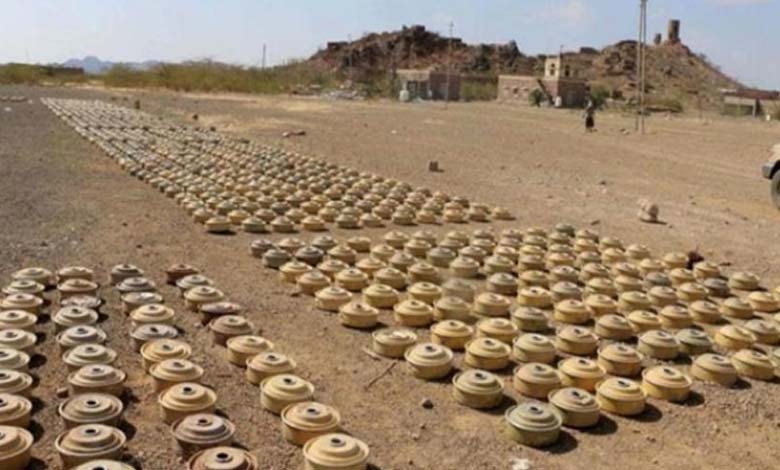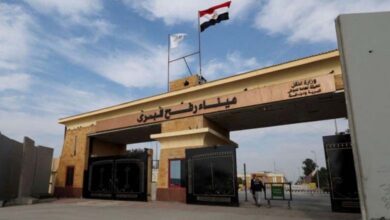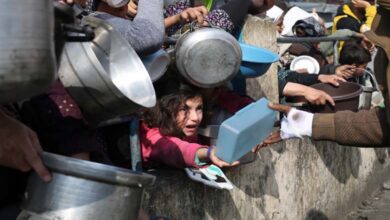Planted by the Houthi Militia… Disarmament of approximately 3,000 mines, ammunition, and explosive devices in one month

The widespread use of landmines by the Houthi terrorist militia along the western coast of Yemen since mid-2017 has led to the killing and injuring of hundreds of civilians and prevented relief organizations from reaching vulnerable communities.
Yemen’s ‘Recruited’ Children: Innocence Assassinated by the Houthis
In the latest report, the Project for the Clearance of Yemeni Lands from Mines (MASAM) announced that it had removed around 3,000 mines, unexploded ordnance, and explosive devices during the current month of October, planted by Houthi terrorist militias in various Yemeni provinces. According to Osama Al-Qaseebi, the General Manager of MASAM, the project teams operating in more than 11 Yemeni provinces since June 2018 continue to discover more Houthi mines that are planted randomly after each ceasefire, pointing out that “the planting of Houthi mines is accelerating and expanding, and project teams are discovering more of them after each ceasefire.”
MASAM, a project affiliated with the King Salman Center for Relief and Humanitarian Works, reported on Sunday that it had removed 688 mines planted by Houthi terrorist militias in various provinces during the fourth week of the current October. The center explained that the removed mines varied between 123 anti-tank mines, 10 anti-personnel mines, 553 unexploded ordnance, and two explosive devices. The total number of mines removed this month reached 2,894, and the total number removed in various Yemeni provinces since the start of the project in June 2018 is approximately 419,997 mines, unexploded ordnance, and explosive devices planted haphazardly by the Houthi terrorist group, causing the deaths of thousands of Yemenis, including children, women, and the elderly.
The United Nations mission for monitoring the implementation of the Stockholm Agreement in the Yemeni province of Hodeidah (western Yemen) had previously stated that the number of civilian casualties due to mine explosions and explosives left over from the war in the province had more than doubled in the past August. During that month, 20 civilians were killed or wounded in 13 incidents related to landmines and explosives from war remnants. According to the UN mission’s report, this number represents a 122% increase compared to July, where 9 victims, including 5 fatalities and 4 injuries, were recorded.
Al-Qaseebi described MASAM as a bold step by the Saudi leadership, through which a project to clear mines was established for the first time in history during an ongoing war, to protect the Yemeni people and allow them to live in peace, away from mines and explosive devices.
Osama Al-Qaseebi called on all local, regional, and international organizations operating in Yemen to publish their data and document their work so that the world can understand the scale of the disaster that Yemen is experiencing due to the Houthi militias‘ determination to kill civilians through the random planting of mines.
Through its teams, MASAM is already working on clearing 11 provinces: Sanaa, Hodeidah, Aden, Al-Bayda, Al-Jawf, Lahij, Marib, Shabwah, Taiz, Al-Dhale, and Saada.
Last month, a Yemeni observatory specializing in documenting the victims and effects of explosives left over from the war warned of the danger of mines washed away by floods to the lives of farmers in the Hodeidah province, western Yemen. The Yemeni Mines Observatory stated on its IX platform: “Farmers in Hodeidah province are at great risk, as recent floods have washed explosive devices and Houthi mines into farmlands in the Hays district, south of the province.












